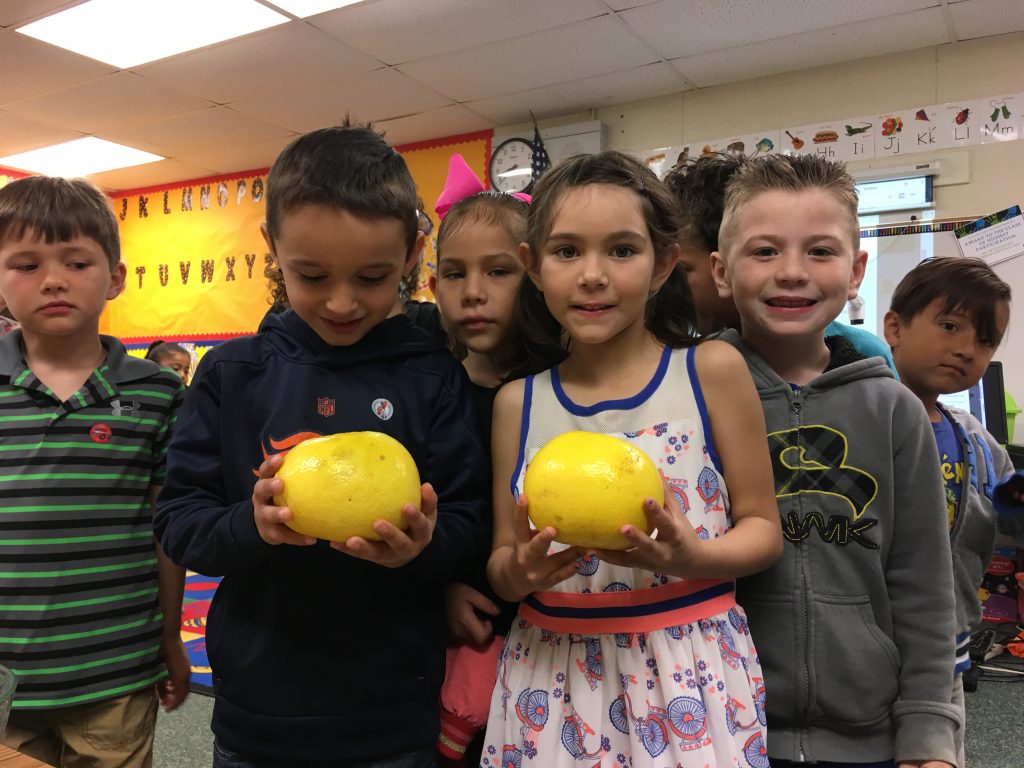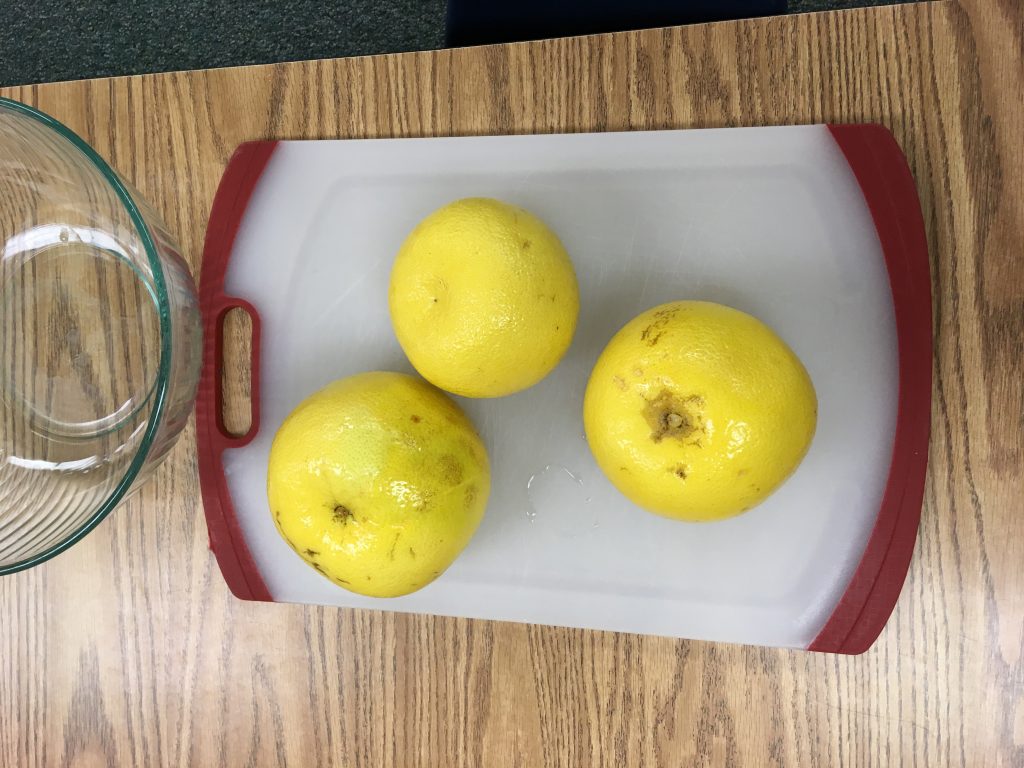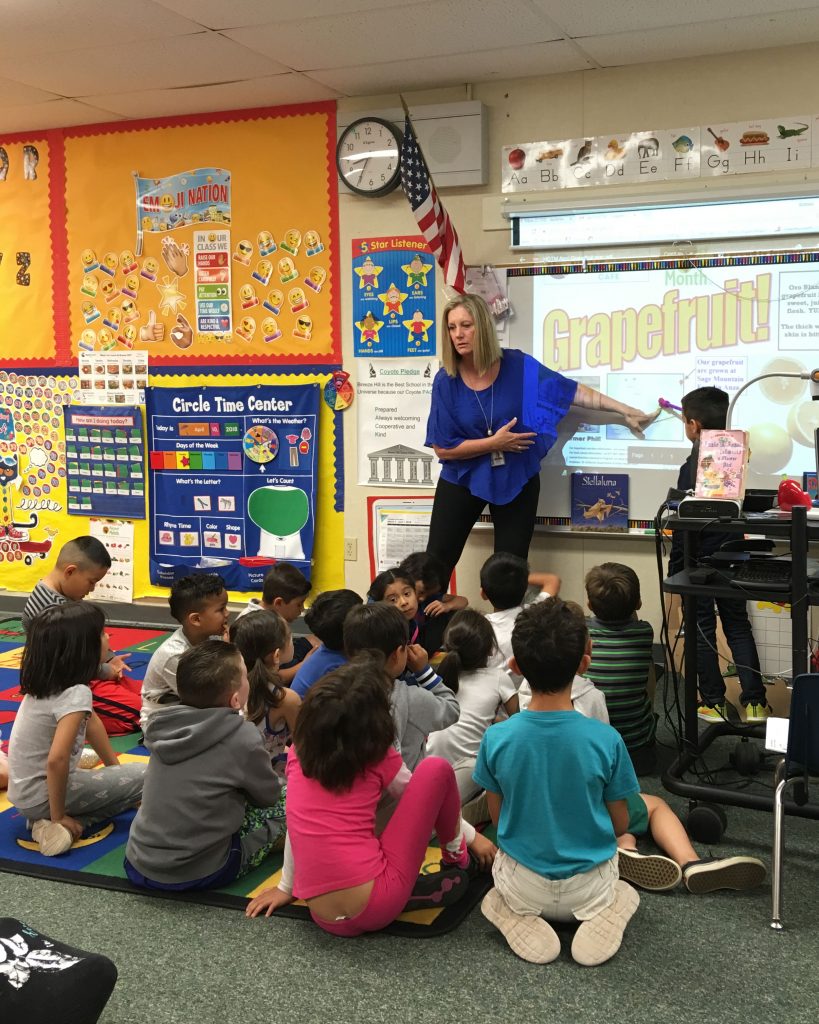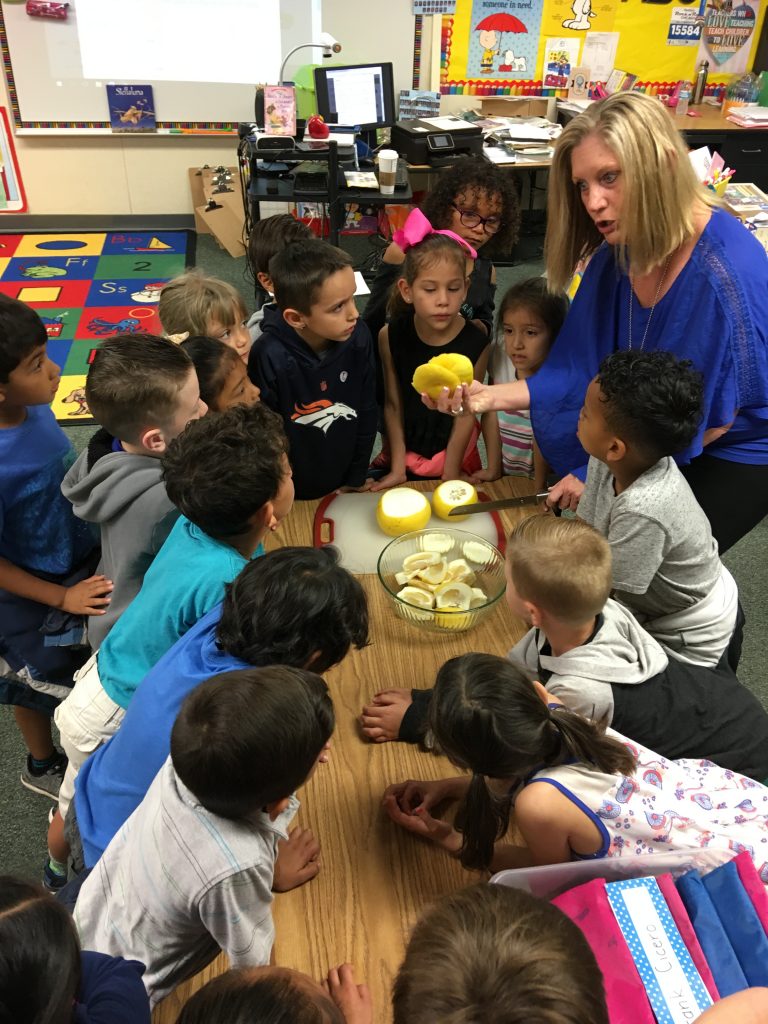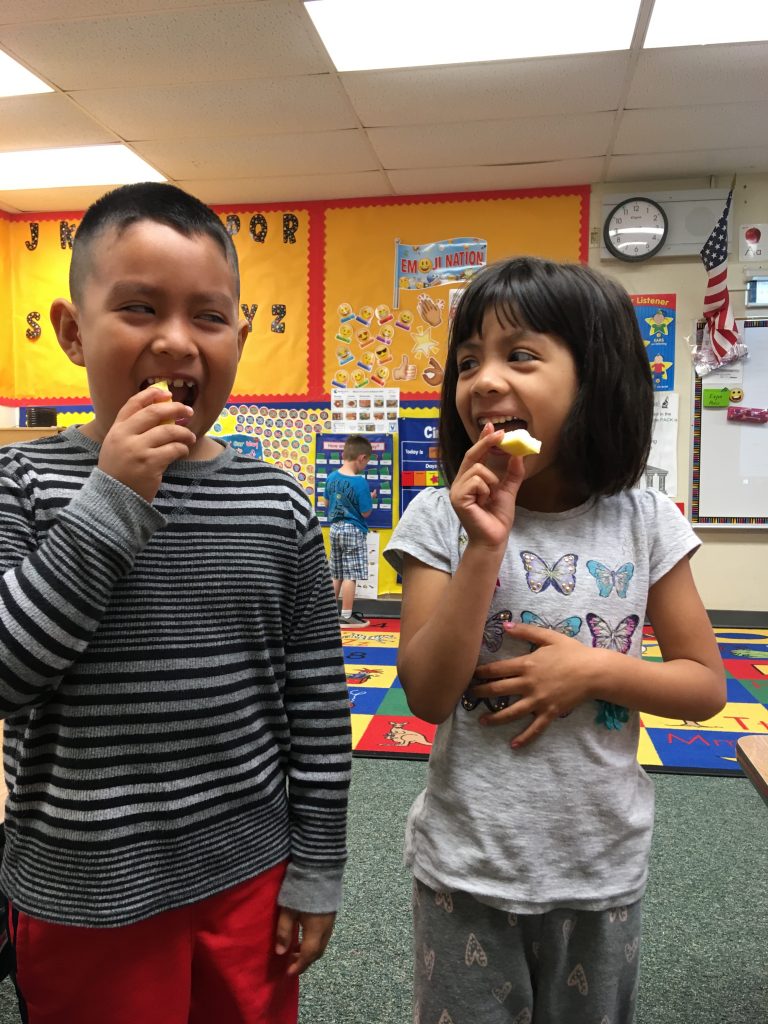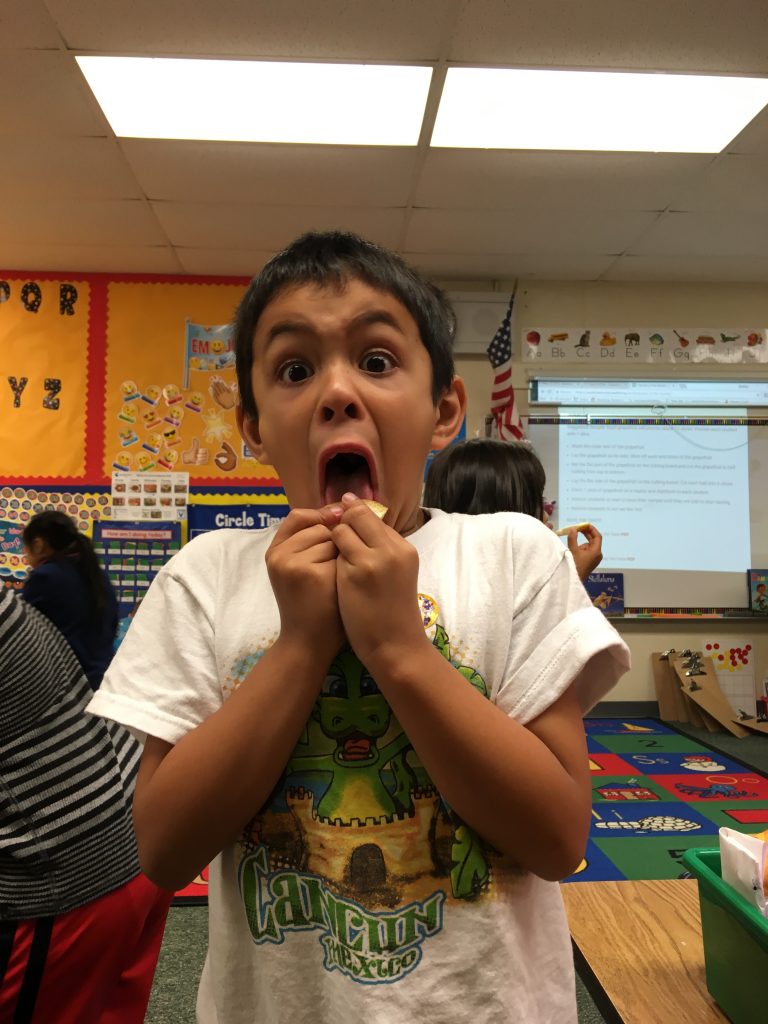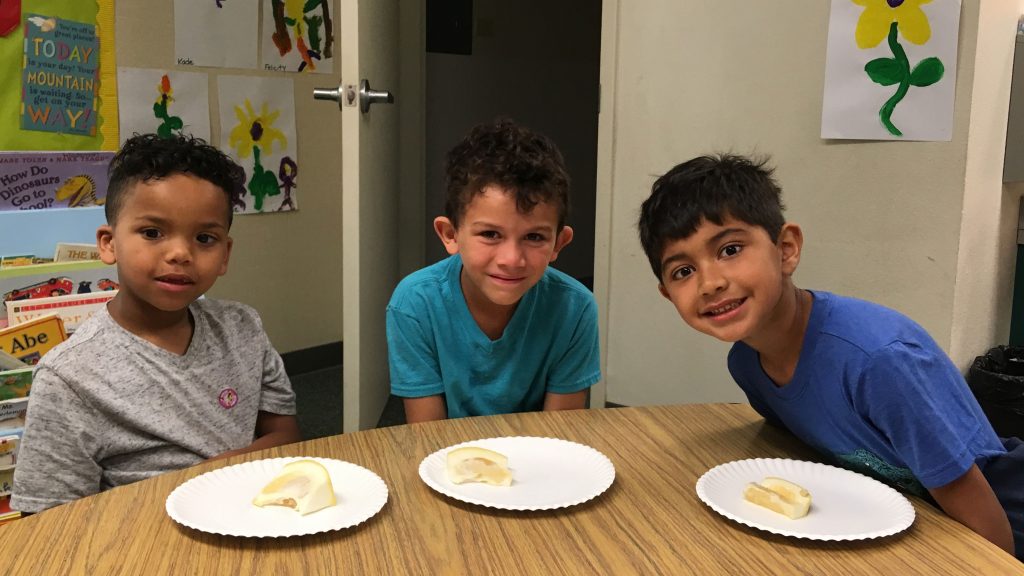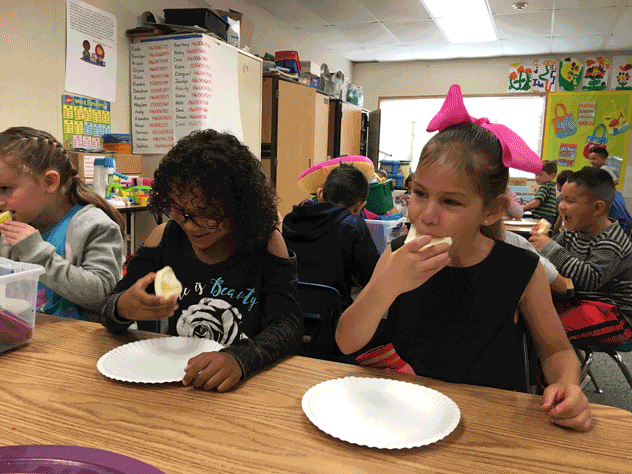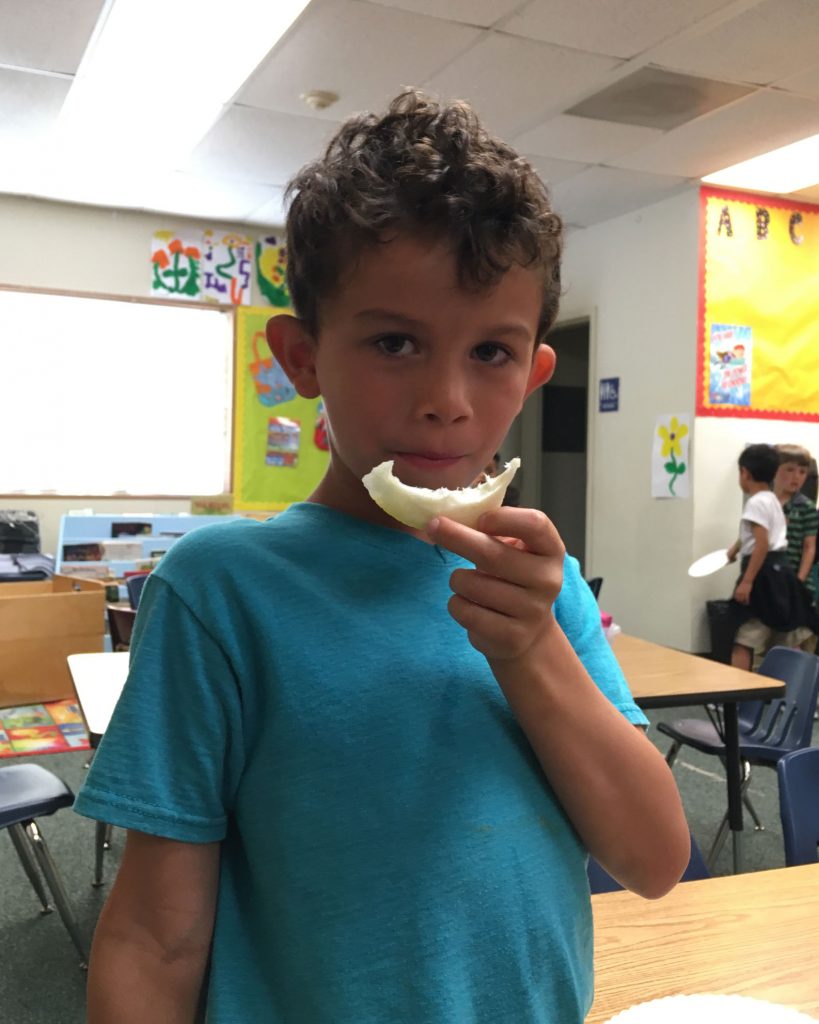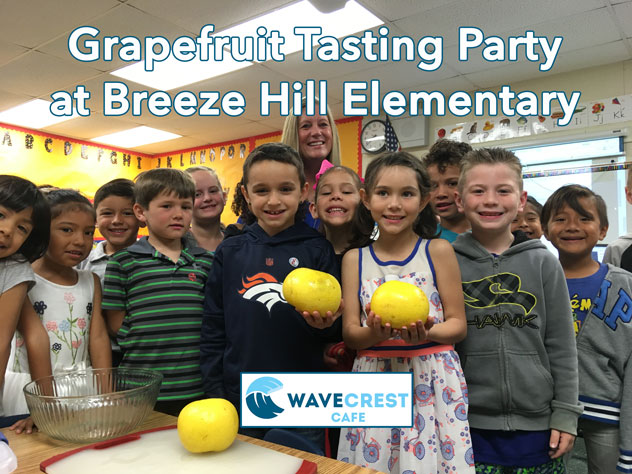
Kindergarten Grapefruit Tasting Party at Breeze Hill Elementary
April 16th, 2018
“Raise your hand if you’ve ever tasted a grapefruit before,” Darlene Wiedeman asks the 20 or so kindergarten students seated on the carpet. About half the students raise their hands high in the air. Though if the general chatter before this moment is to be believed, most of them seem to be new to grapefruit.
Fortunately for them, these aren’t just any grapefruit. Perhaps the small size of the students makes them appear larger, but these grapefruits are huge. Grown at Sage Mountain Farms less than an 80 minute drive from Breeze Hill Elementary, they’re bright yellow and still damp from being washed. This is the ideal season for grapefruit, and Ms. Wiedeman’s class received three picture-perfect fruits for the tasting party.
“We love Harvest of the Month,” says Ms. Wiedeman, “especially because this is a new experience for a lot of my students. They don’t always get the opportunity to try new foods at home.” Harvest of the Month also helps connect students to food served in WaveCrest Cafe. Once students get a taste for a new food in the classroom they’re more willing to try it in a prepared dish. It can take several tries before a child likes a new food, and these tasting parties help get that process started.
Teachers receive age-appropriate lesson plans for Harvest of the Month. The kindergarteners started the morning with a brief video about growing citrus. “Grapefruit are special fruit because they can only grow in the right environment,” Ms. Wiedeman tells her class. Southern California just so happens to have that right environment!
The class also learns that grapefruit flesh color can vary from a reddish-pink to almost white. They gather around as Ms. Wiedeman cuts into the three fruits. They can see these are a vibrant yellow inside as well as out. Students notice the similarities between the appearance of these grapefruit and lemons, which they’re more familiar with. The similarities don’t stop at appearances!
Slicing away bits of the skin, Ms. Wiedeman explains the different taste profiles of grapefruit. “The outside skin is bitter, but the inside flesh is sweet,” she says. Recognizing that the kindergarteners probably don’t understand bitterness, she adds with a smile, “if you eat it you’ll learn what bitter means.”
A few adventurous students take pieces of the skin to test. Ms. Wiedeman encourages them to put the skins in their mouths to see what bitter tastes like. “It won’t hurt you,” she says. Those that taste the skin have learned a valuable lesson today! They squint their eyes, pucker their cheeks, and some stick out their tongues at the taste of the skin.
Not to let the skin set the tone for the rest of the fruit, Ms. Wiedeman builds up anticipation for the main event. The class lines up behind Romeo, her helper of the day, and each takes a paper plate with a grapefruit slice. Once everyone has their slice, she counts down to three and everyone takes a bite.
Reviews are mixed, but the majority of the class likes it! Some students take a few bites before making up their minds, trying to get the most of the sweet flesh with as little of the bitter skin as possible. The ultimate win is when Ms. Wiedeman asks who would try grapefruit again and several little hands go up.
After each student ate (or at least tasted) his or her slice, anyone interested in seconds was invited to line up for another bite. Unfortunately, there were more students wanting seconds than there were slices left, but Ms. Wiedeman let them know to find it in WaveCrest Cafe on Thursday.
Harvest of the Month introduces students at Vista Unified School District to a new fruit or vegetable every month. Produce is locally grown and delivered to the schools for educational tasting parties designed to broaden young palates. Some of the past fruits and veggies have included avocado, kiwi, and cherry tomatoes. Last month we visited third graders at Empresa Elementary for a bok choy tasting party (which was a huge success!).
Teachers who participate in Harvest of the Month can take advantage of a variety of lesson materials, including videos about the local farm, worksheets, guided activities, and history about the produce.

